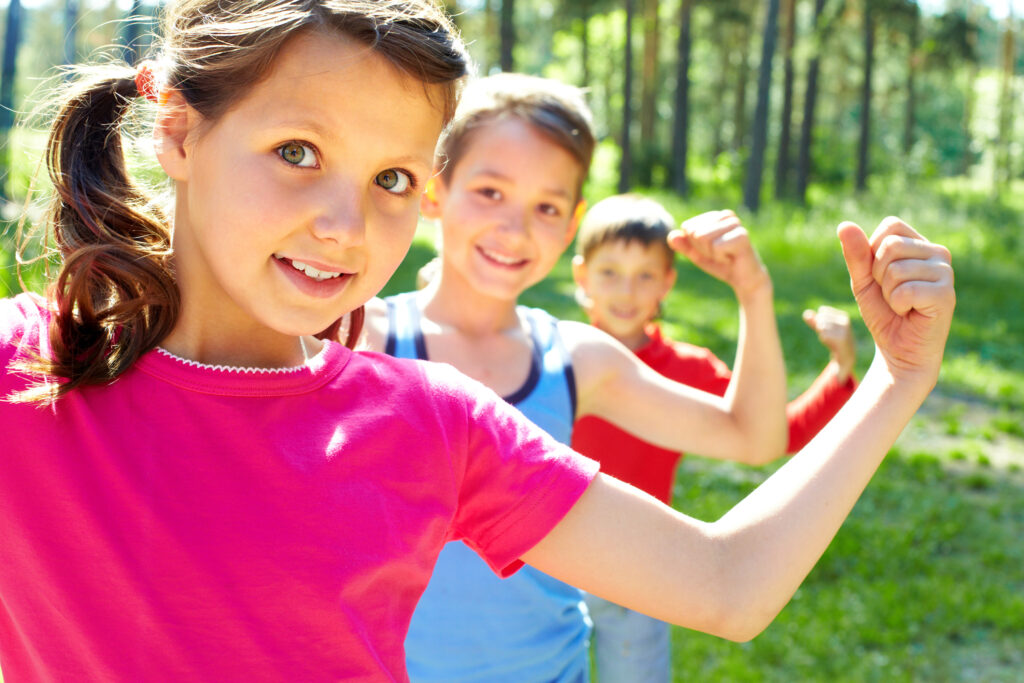Morning Routine: 5 Magical Ideas for a Joyful and Effective Start ☀️

Mornings can feel like a whirlwind: tangled hair, missing socks, cereal spills, forgotten backpacks. But they can also be magical. With a little structure, a lot of creativity, and a dash of connection, your family can turn morning chaos into calm, consistent joy.
Routine matters: how children start their mornings can impact everything from their emotional resilience to their language development (Boudreaux et al., 2021). So why not turn the routine into a ritual that feeds their body, mind, and heart?
Below, you’ll find artsy, heart-centered routine ideas rooted in research and sprinkled with fun ✨
🎨 1. Wake Up with Wonder: A Creative Start
Instead of barking, “Get up! We’re late!”, try a gentler transition. Children’s brains are highly sensitive to tone and rhythm first thing in the morning. Start with:
- A “wake-up song” (even better if it’s in your second language!)
- A tiny visual art moment: have your child draw how they slept (e.g., a sun for good sleep, a cloud if they’re tired)
- Light stretching while naming body parts in both languages
Why it works: Studies show that routine-based transitions improve emotional regulation and reduce stress in children under 10 (Mindell et al., 2017). Pairing movement and music enhances memory and language acquisition (Degé & Schwarzer, 2011).
🧼 2. Make Hygiene Playful
Brushing teeth and washing up don’t have to be boring. Try:
- A “toothbrush dance” song that lasts 2 minutes
- A sticker chart titled “Shiny Smiles and Happy Hands”
- For bilingual families: make hygiene vocab part of the fun (“J’ai lavé mes mains!” or “I brushed my teeth!”)
Why it works: Children form stronger habits when daily tasks are ritualized through storytelling or visuals (Fiese et al., 2002). This builds a sense of mastery and control over their bodies—a huge boost for confidence.
🥣 3. Nourish with Words and Food
Instead of rushing through breakfast, turn the table into a language and connection zone. You can:
- Label breakfast items in your target language (banana = la banane)
- Share a “word of the day” in both languages
- Ask a “question of the morning” like: “What’s something you want to try today?”
Why it works: Eating together—especially with conversation—boosts both cognitive and emotional development. Children who regularly share meals with their families score higher in language assessments and emotional intelligence (Musick & Meier, 2012).
💌 4. Connection Before Direction
Before jumping into the day’s agenda, pause for a minute of genuine connection. Hug. Make eye contact. Tell them one thing you love about them or something you’re looking forward to doing together later.
Why it works: Emotional connection improves cooperation, confidence, and learning capacity in children (Immordino-Yang & Damasio, 2007). Kids don’t just want to be efficient—they want to feel seen.
🌈 5. Add a “Goodbye Ritual”
Transitions are hard, even for grownups. Try creating a goodbye routine:
- A secret handshake
- A “hug sandwich” (hug, kiss, hug)
- A drawing slipped into the lunchbox
Why it works: Rituals help kids feel grounded and secure, especially before separating for school or daycare. They reduce anxiety and strengthen attachment (Fiese et al., 2002).
Final Thoughts
A morning routine doesn’t have to be perfect—it just needs to feel safe, predictable, and full of small joys. When kids begin their day with connection, movement, play, and loving guidance, they’re more likely to walk out the door feeling emotionally full and ready to learn.
And remember: every day is a fresh chance to try again. Whether the toast burns or the socks don’t match, you’re still building memories and resilience.
🌟 For more engaging learning ideas, visit our blog weekly! We share creative activities, language tips, and more to make learning exciting. Stay connected with the latest posts on the Langmobile blog! And don’t forget to check out awesome songs on our Apple Music, YouTube, and Spotify pages to help with your language learning!
🧠 Reference
- Boudreaux, C., Sullivan, J., & Zimmerman, M. (2021). Structured Routines and Self-Regulation in Early Childhood. Early Childhood Research Quarterly, 56, 144–156.
- Degé, F., & Schwarzer, G. (2011). The effect of a music program on phonological awareness in preschoolers. Frontiers in Psychology, 2, 124.
- Fiese, B. H., Tomcho, T. J., Douglas, M., Josephs, K., Poltrock, S., & Baker, T. (2002). A review of 50 years of research on naturally occurring family routines and rituals: Cause for celebration? Journal of Family Psychology, 16(4), 381–390.
- Immordino-Yang, M. H., & Damasio, A. (2007). We feel, therefore we learn: The relevance of affective and social neuroscience to education. Mind, Brain, and Education, 1(1), 3–10.
- Mindell, J. A., Leichman, E. S., Du Mond, C. E., & Sadeh, A. (2017). Sleep and social-emotional development in infants and toddlers. Journal of Clinical Child & Adolescent Psychology, 46(2), 236–246.
- Musick, K., & Meier, A. (2012). Assessing the impact of family meals on child and adolescent well-being: A meta-analysis. Journal of Marriage and Family, 74(3), 476–493.

